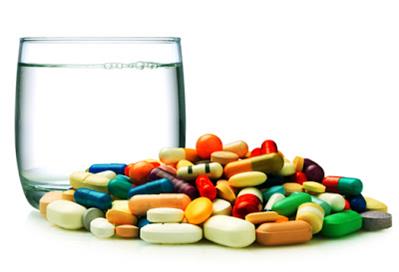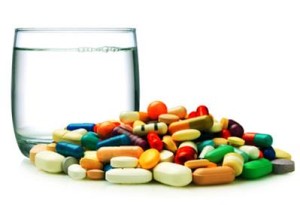
 In 2003, The Lewin Group published “New Study Finds Increased Multivitamin Use By The Elderly Could Save Medicare 1.6 Billion.” The study also stated that this could happen over the following FIVE years. So, 2008 came and went, and 1.6 billion in Medicare costs did not materialize. Wonder Why?
In 2003, The Lewin Group published “New Study Finds Increased Multivitamin Use By The Elderly Could Save Medicare 1.6 Billion.” The study also stated that this could happen over the following FIVE years. So, 2008 came and went, and 1.6 billion in Medicare costs did not materialize. Wonder Why?
On a website for pharmacists, I read “Is Too Much of a Multivitamin a Bad Thing?” (The original link is no longer available.) The article focused on everyone getting enough vitamin C and other nutrients in the diet. Not taken into consideration, I guess, is the huge quantity of nutrient-deficient fast food that is the main diet of many children and adults. The article began:
“Healthy individuals can easily get enough vitamin C through diet alone. Based on a 2000-calorie diet for healthy adults, half of one 2.5-oz package of Kellogg’s Fruity Snacks provides 100% daily value (DV) of vitamin C. If you ate the entire package, it would provide 200% DV.
I thought to myself, here is another attack on supplements by a supposedly informed medical professional. The author of the article was a candidate for her doctorate.
Based on the product’s name, “Kellogg’s Fruity Snacks,” I assumed it was worthless junk. However, I didn’t want to blindly judge, so I researched the ingredients. This is what I found:
Ingredients from highest to lowest amount: CORN SYRUP, SUGAR, APPLE PUREE CONCENTRATE, WATER, MODIFIED CORN STARCH, GELATIN, CONTAINS 2% OR LESS OF CITRIC ACID, MALIC ACID, VITAMIN C (ASCORBIC ACID), NATURAL AND ARTIFICIAL FLAVORS, RED 40, BLUE 1.
From that description, the product is mostly sugar, some vitamin C, and other items, including food dyes “Red 40 and Blue 1”. The food dyes were the most egregious offenders, in my opinion. I looked for more information about those two dyes, and this is what I learned:
- Blue #1 (E133) and Blue #2 (E132): Banned in Norway, Finland, and France, studies have shown them to cause brain cancer and inhibit nerve-cell development. The colors are in candy, cereal, soda, sports, and pet food.
- Red #3 (E127) and Red #40 (E129): While Red #3 was banned [in the U.S.] in 1990 for topical use, it can still be sold on the market in our foods and beverages. That should make us all red in the face. Red #40 may contain the carcinogenic contaminant p-Cresidine and is thought to cause tumors of the immune system. In the UK, it is not recommended for children, and it is currently banned in many European nations. The dyes are found in fruit cocktails, maraschino cherries, grenadine, cherry pie mix, ice cream, candy, bakery products, and more.
It’s bad enough that such junk is allowed to be sold in the name of “human food”. Much of the damage done by nutritionally bankrupt diets could be mitigated by the use of nutritional supplements, but they are dismissed as useless or not needed. Here is another misguided fear-mongering link:
Dangerous Things That Can Happen If You Take a Multivitamin Every Day
We have been conditioned to trust the doctor, who has been taught very little about nutrition. We need to start trusting our own intelligence. We are not as stupid as they think or suggest we are.
If only the information in the Lewin Group study back in 2003 had been implemented. Medicare could have saved 1.6 billion in five years and several times after that. But then, too many healthy people might have negatively affected sales of drugs manufactured by the drug industry.
Leave a Reply